I'm interested in building a buffer battery for a 12V GPS tracker using a single 18650 Li-Ion cell. It will be mounted on a bicycle and unfortunately I haven't found a design for a tracker including battery that works exactly how I want. The general idea is that the battery charges while riding and if I want also while at home from mains. The tracker itself has a built-in 150mA Li-Po and I'd like to extend that a little bit.
I found a pdf with instructions which I am using as my basis. The source URL is below and the important part (diagram and protoboard) is underneath the source URL:
https://am.heise.de/abo/06_ma_education/Nabendynamo.pdf
The specifics are as follows:
Dynamo (6VAC/500mA) -> Schottky bridge rectifier -> smoothing capacitor -> step-down voltage regulator (to 5V) -> 1S Li-Ion charging board (with 18650 cell) -> step-up voltage regulator (to 12V) -> GPS Tracker
The dynamo I'm planning on using is a Shimano DH-3D37 which outputs 6VAC and 500mA. According to my research, the output frequency is probably between 11Hz and 90Hz depending on speed.
I chose SB260 Schottky diodes because of their low voltage drop. What's important is that the 6VAC dynamo output can be reliably regulated to a 5VDC input for the Li-Ion charging board.
I tried some ripple calculators and what came out is for example 1.7V ripple (!!!) with a 500mA/15Hz/10000µF setup. Am I doing something wrong? 1.7V is probably too much for the poor charging board and that capacitor is huge as it is. The pdf I linked above is only using a 2200µF capacitor and apparently the phone in question charges reliably.
I want to use a Polulu D24V10F5 to step down the voltage to 5V required by the Li-Ion charger board. I chose this one because of its low dropout. I've used LM2596 boards before (as suggested in the pdf) but only for applications where dropout is less important.
I want to use a DEBO3 3.7LI 1.0A charging board to interface between the regulated input, the battery itself, and an output. I chose this one because it has connections for all three aforementioned purposes and because it seems to be good quality and is sold by reputable companies (reichelt.de and berrybase.de). The quality is important here because I wouldn't trust something cheap to charge my 18650 properly.
Additionally to the aforementioned circuit I want to be able to charge from a classic AC adapter if I haven't ridden in a while. My idea was to attach a DC jack directly at the charging board input for an AC adapter that outputs 5V and simply isolate the two 5V sources with diodes.
Since the tracker needs 12V (at the very least 9V according o the specifications) I need a step-up regulator and I chose the Polulu U3V16F12 because it's pretty efficient and 12V is a reasonable value.
The tracker in question happens to be a Winnes TK806 in case anyone is curious.
Is it safe and sane to attach a Li-Ion charger board to a source with that kind of ripple? Would it maybe help to find a dynamo that outputs a higher frequency? It needs to be 36-hole with a centerlock disc mounting point and shouldn't be too expensive. Also the circuitry should not be too bulky because I want it to fit it to a bicycle.
My question is basically if my idea would work reliably and if not what I should change. Also specifically what value I should choose for a smoothing capacitor.
Thank you so much!
